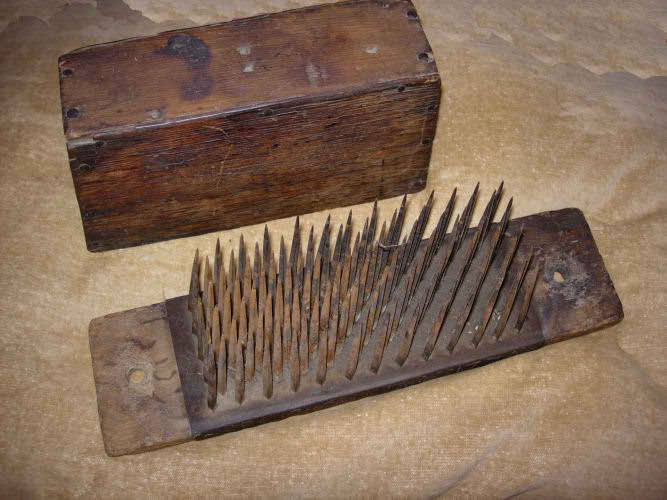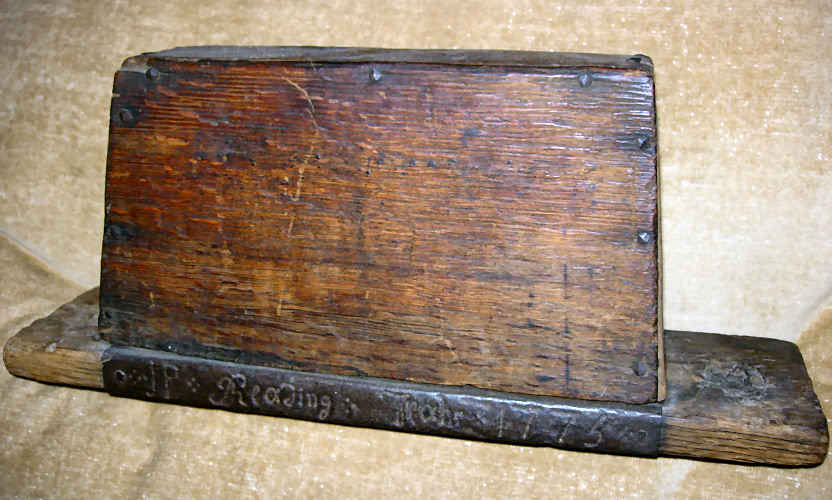


| This is the second oldest, dated hatchel in my collection. As you can see, the date of 1775 and the name of the town of Reading (Pennsylvania) were engraved on the hatchel's base. Also appearing just ahead of the name of the town of Reading are the initials "J" and "P". These were possibly the initials of the owner. {The piece is also exhibited in the American Revolutionary War group.} Variously known as a flax comb, the hatchel was the next tool to be used after the pieces of the outer husks and the coarse inner core have been removed from the inner silky fibers in the process of scutching. The housewife would grab a handfull of the flax fibers, and bring them down into the "teeth" of the hatchel at a right angle to the length of the tool. Then she would pull the fibers through the hatchel's teeth. This would be done a couple times to separate any remaining pieces of the husk or outer bark that might still have remained after the scutching. This process was known as hackling, and for that reason, som people refer to this item as a hackle rather than hatchel. Although there might be some exceptions, most hatchels consisted on a board, through which nails were pounded. Usually, a flat sheet of metal, such as tin, would be wrapped around the board where the nails were pounded through, making them more secure and able to take the constant tugging when the tool was in use. Also, there are usually two small (less than 1" in diameter) holes drilled in either end of the board. These were no doubt used to fasten the hatchel onto some surface, such as a table or a stand, by means of a rope. The holes would also have allowed the tool to be hung onto nail pounded in a wall when not in use. In some cases, but not in all, the hatchel included a five sided box to cover over the nails when not in use. The long, silky strands that resulted from hackling were called line, while the shorter, broken fiber residue was called tow. A handfull or bundle of hackled line was known as a streak or strick. |

